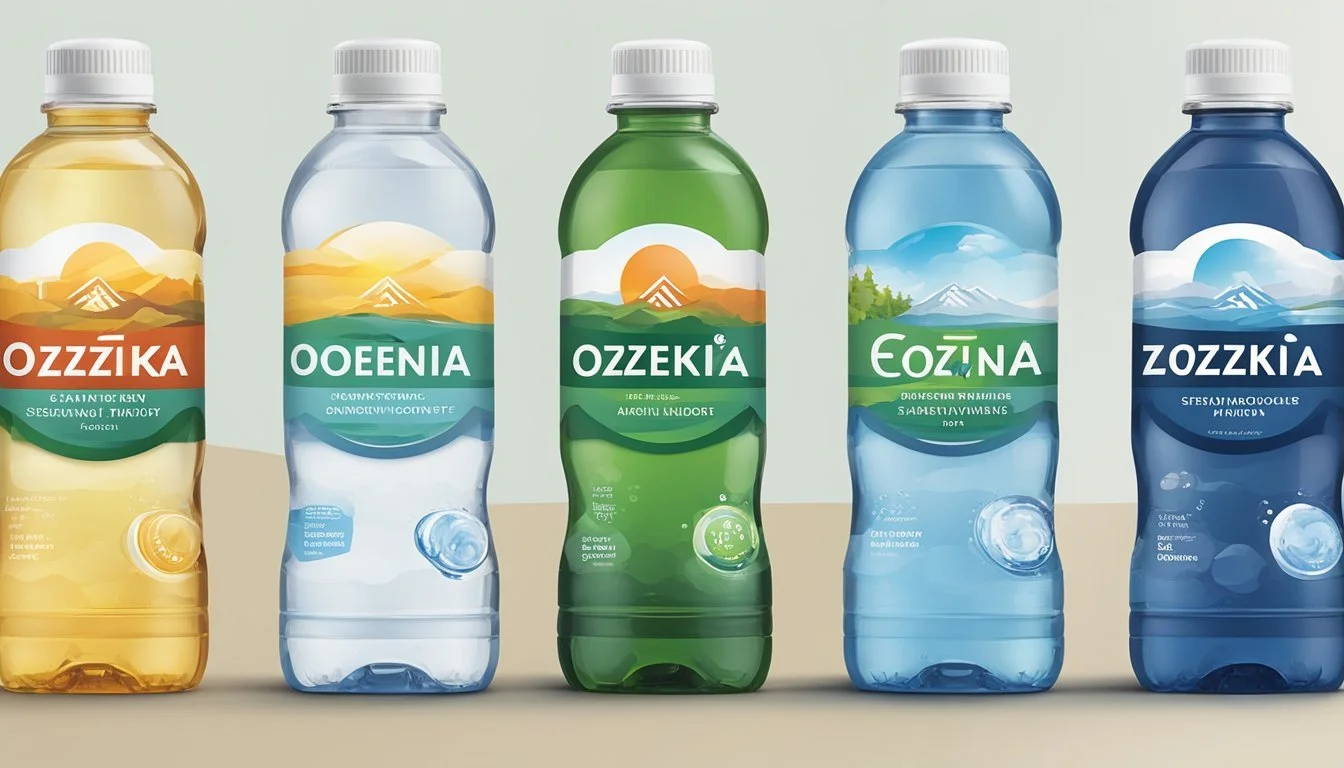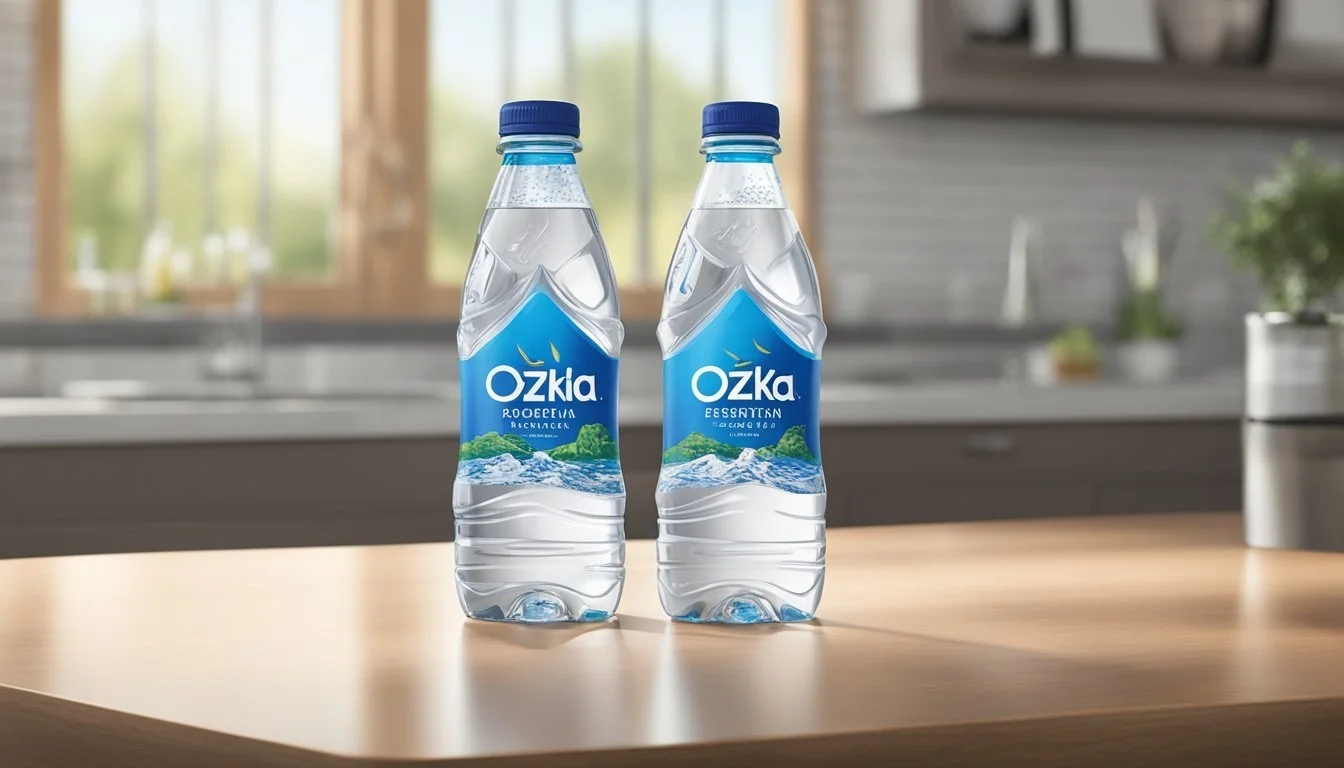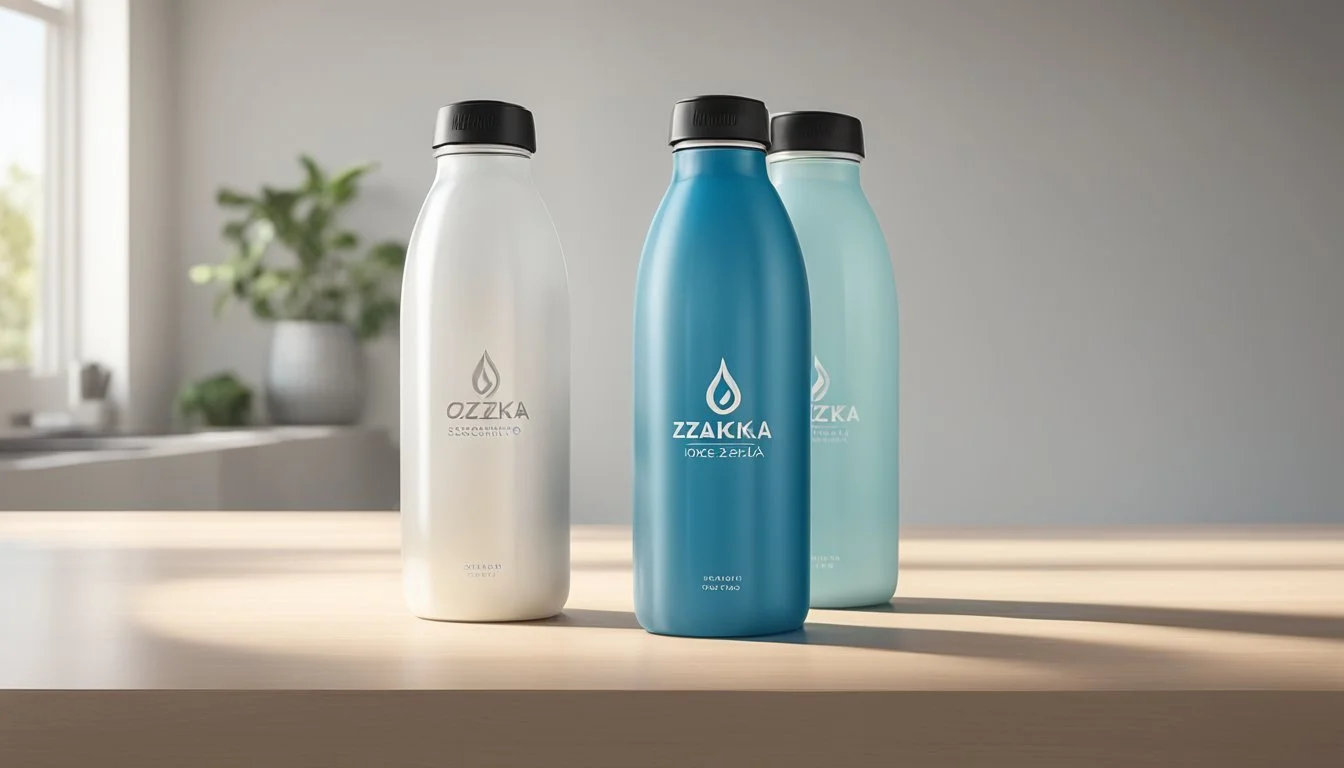Essentia vs. Ozarka
Selecting the right bottled water for personal consumption is often based on individual preferences for taste, purity, and mineral content. Essentia and Ozarka are two bottled water brands that have established strong followings among consumers. Essentia is known for its alkaline water with a pH of 9.5, often chosen for its potential health benefits and clean taste. It attracts those who favor a higher pH level in their drinking water for hydration purposes.
On the other hand, Ozarka is a brand that sources its water from springs in Texas, capitalizing on the natural origin and regional appeal. The brand caters to consumers who prioritize drinking water that is sourced from natural springs and prefer the taste that comes from such sources. Given the high demand for bottled water, it's beneficial for shoppers to understand the distinctions between these two brands to make an informed decision that aligns with their hydration needs and personal preferences.
Comparative Analysis of Essentia and Ozarka
Essentia is known for its alkaline water, boasting a pH level of 9.5. This high pH is achieved through a process involving reverse osmosis and electrolyte addition. These steps remove impurities and then enhance the water with ions, making Essentia distinctively smooth and clean-tasting. The company’s methodology is designed to yield a product that supports hydration through an alkaline diet.
In contrast, Ozarka is a brand that offers natural spring water, sourced from Texas springs. This brand emphasizes the natural origin of its product, presenting water that is filtered through layers of the earth which naturally imbues it with a balanced mineral content. Ozarka's product has a fresh taste, characteristic of many spring waters. The brand touts that it is free from artificial additives, which aligns with consumer demand for purity in bottled water.
When it comes to mineral content, both brands offer a mix of diluted minerals and electrolytes for taste and potential hydration benefits, although the specific mix and concentration levels may differ between the brands due to their differing sources and treatment processes.
Essentia employs filtration and electrolyte enhancement as part of its production, which distinguishes it as more than just purified water; it’s an engineered alkaline water. Ozarka, however, banks on the natural filtration of groundwater through rocky strata to provide its mineral composition, ensuring that Ozarka Natural Spring Water maintains its pure taste.
In summary, Essentia is characterized by its high pH and post-filtration electrolytes, aiming for hydration benefits associated with alkaline water. Ozarka showcases its commitment to pure, spring-sourced water with no artificial enhancements, relying on natural filtration for its clean taste.
Health and Safety Standards
When comparing Essentia and Ozarka bottled waters, it's imperative to consider the rigorous health and safety standards that guide the production and quality control procedures. These standards ensure the provision of clean drinking water that meets all regulatory requirements and is free from harmful contaminants.
EPA and FDA Regulations
The Environmental Protection Agency (EPA) sets standards for tap water, while the Food and Drug Administration (FDA) regulates bottled water. Both Essentia and Ozarka must comply with these regulations to ensure their bottled water is safe for consumption. The FDA mandates that bottled water manufacturers adhere to the following:
Standards of identity: Definition of different types of water (e.g., spring water, mineral water).
Standards of quality: Specific contaminant levels that must not be exceeded.
Current Good Manufacturing Practices (CGMPs): Ensure proper design, monitoring, and control of manufacturing processes and facilities.
Contaminants and Chemicals
Consumers expect bottled water to be devoid of harmful chemicals. The FDA has established Maximum Contaminant Levels (MCLs) for various substances, ensuring bottled water products do not pose a risk to health.
Lead: A toxic metal that can be found in water sources and is regulated by both the EPA and the FDA. Bottled waters like Essentia and Ozarka are tested and monitored to ensure lead levels remain below EPA’s action levels.
Arsenic: A natural contaminant that can lead to serious health issues. The FDA enforces an MCL of 10 ppb (parts per billion) for arsenic in bottled water.
PFAS Chemicals: These man-made chemicals are resistant to water, oil, and heat, and have been found in some bottled water brands. Regular testing is conducted to ensure PFAS levels remain non-detectable or within safe limits as mandated by the FDA.
Both Essentia and Ozarka strive to maintain high standards of purity and safety, frequently testing for these contaminants to ensure compliance with all health and safety regulations.
Environmental Impact and Sustainability
Choosing between Essentia and Ozarka bottled waters not only involves taste and purity but also their environmental impact and sustainability practices. Consumers are increasingly concerned with the ecological footprint of their purchases, and water brands are no exception.
Bottled Water Production
Essentia Water utilizes a process called ionization to alkalize its water and deliver its signature product. This process involves electricity and sophisticated equipment, which contribute to the brand's overall environmental impact. The company commits to sustainability by aiming to use recycled PET plastic for its bottles, which can help reduce waste.
In contrast, Ozarka, sourced from natural springs in Texas, prides itself on its local heritage. Ozarka's parent company, Nestlé Waters, has initiatives in place to manage their water sources sustainably and efficiently, ensuring long-term water supply and minimal environmental disturbance. They also promote recycling and utilize recyclable materials for their packaging. Nevertheless, transporting water from the source to consumers involves the emission of greenhouse gases, an important consideration for the environment.
Bottled Water Brand Production Process Packaging Material Transportation Impact Essentia Ionization Recycled PET Nationwide distribution Ozarka Natural filtration Recyclable materials Local distribution
Water Source Conservation
When examining water source conservation, groundwater and mountain spring sources are at the forefront of the conversations. Both Essentia and Ozarka ensure that their water extraction methods do not deplete the aquifers and springs they source from.
Mountain springs, such as those used by brands like Ice Mountain Natural Spring Water and Arrowhead Mountain Spring Water, typically have a naturally replenishing supply. However, the sustainability of these sources can be compromised if the rate of water extraction exceeds the replenishment rate.
Groundwater sources used by various brands, including Eternal Water and Mountain Valley Spring Water, require careful management. Over-extraction can lead to a drop in water tables and negatively affect the surrounding environment. Essentia asserts that its water is sourced from publicly available water sources and is purified, while Ozarka, derived from multiple springs, actively monitors and manages spring yield to mitigate environmental impacts.
Implementing conservation measures, monitoring water levels, and investing in local communities are a few ways that these brands contribute to sustainability and environmental stewardship. Both Essentia and Ozarka are cognizant of the need to protect the environment and utilize resources responsibly to ensure availability for future generations.
Consumer Experience
When choosing between Essentia and Ozarka bottled waters, consumers often consider taste, texture, and packaging as pivotal factors in their decision-making process.
Taste and Texture
Essentia is known for its alkaline water, which has a pH of 9.5. Customers often describe Essentia's water taste as clean and crisp with a hint of velvety texture, which may contribute to an enhanced hydration experience. The ionization process not only gives Essentia its unique taste but also its smooth texture that appeals to a market looking for a more substantial mouthfeel in their water.
Ozarka, on the other hand, offers natural spring water from Texas, which is touted for its fresh and natural water taste. Consumers often appreciate the taste of Ozarka for being pure without any overt aftertaste, attributing it to the brand's commitment to sourcing water from carefully selected springs.
Packaging Choices
When it comes to packaging, both brands offer various options, catering to the convenience sought by most consumers.
Essentia:
Available primarily in plastic bottles.
Sizes range from portable 12-ounce bottles to one-liter bottles fit for longer periods of use.
Ozarka:
Offers options in both plastic and recycled materials.
Provides small, portable bottles as well as larger multi-gallon options designed for home or office use.
Neither brand regularly uses glass bottles in their product lines, which can be a determining factor for consumers preferring the purity and taste retention qualities of glass. However, the choices available provide a range of convenience for those on the go, or those keeping hydration close at hand at home or at work.
Brand Histories and Sources
When exploring the differences between Essentia and Ozarka bottled waters, it's essential to examine the origins and sources of each brand, as these factors contribute significantly to the water's quality and taste.
Origins of Essentia
Essentia began with the ambition to create a superior hydrated experience. They assert their difference through a proprietary ionization process, transforming water from various sources into alkaline water with a pH of 9.5 or higher. While the specific sources aren't tied to a unique natural setting like some other water brands, Essentia's emphasis is on the technological enhancement of the water's properties.
Ozarka's Heritage
In contrast, Ozarka's story is deeply rooted in its regional American heritage, with water that originates from the Ouachita Mountains. Established in 1905, the brand has long been associated with natural spring water that's filtered through ancient, mineral-rich volcanic rock, providing a distinctive taste profile. Texas and surrounding states are the primary beneficiaries of Ozarka's natural spring water, emphasizing the brand's local sourcing commitment.
Economic Aspects
When assessing Essentia and Ozarka, economic considerations such as market presence, availability, pricing, and consumer demand are critical. Each brand has unique factors that influence its economic standing in the competitive bottled water market.
Market Presence and Availability
Essentia Water, operating as a private company, has made significant inroads in the premium bottled water segment, known for its ionized alkaline water. It is available across the United States in various retail outlets, including major grocery stores and health food retailers, enabling strong distribution channels.
Ozarka, a brand under the Nestlé Waters division, taps into Nestlé's expansive distribution network, which is one of the largest globally. Ozarka primarily focuses on regions in the South-Central United States, specifically targeting Texas, where it sources its natural spring water. Both brands benefit from their parent companies' strengths—Nestlé's vast infrastructure and Essentia’s focus on niche markets.
Pricing and Consumer Demand
Pricing strategies for both brands reflect their market positioning. Essentia tends to be priced higher due to its niche as a premium alkaline water and its targeted demographic who are willing to pay more for perceived health benefits. On the other hand, Ozarka is often less expensive, appealing to a broader consumer base that prioritizes natural spring water at a more affordable price point.
Consumer demand for both brands correlates with their marketing and availability. Essentia's focus on its alkaline water benefits caters to a specific consumer group looking for function-driven beverages, while Ozarka's local appeal makes it a popular choice within its core geographic market. The presence of large companies such as Coca-Cola and Nestlé influences consumer choices by leveraging brand recognition and extensive marketing campaigns to capture demand in different water brand segments.
Conclusion
When comparing Essentia and Ozarka bottled waters, one must consider several factors including pH level, presence of minerals, and overall health impact.
Essentia boasts a high pH of 9.5, which some consumers seek out for its purported hydrating effects. Its manufacturing process removes acidity, potentially making it a preferable choice for those with a sensitive stomach or those seeking alkaline water for health reasons.
On the other hand, Ozarka, sourced from springs in Texas, provides a natural mineral composition which may be beneficial for hydration. Ozarka's taste and quality have been described as standard, without any distinguishing characteristics that make it stand out notably in the crowded bottled water market.
Neither brand makes extraordinary claims about health benefits, and both are effective for maintaining hydration. Consumers should also consider the environmental impact of their bottled water choice, as well as other factors such as price and availability.
In summary:
Essentia: High alkaline pH, potential health appeal for certain users.
Ozarka: Natural source, standard mineral content.
Given this information, those seeking a high-pH water might lean towards Essentia, while individuals valuing natural mineral content might prefer Ozarka. Each has its own merits depending on the consumer's personal preferences and values.






